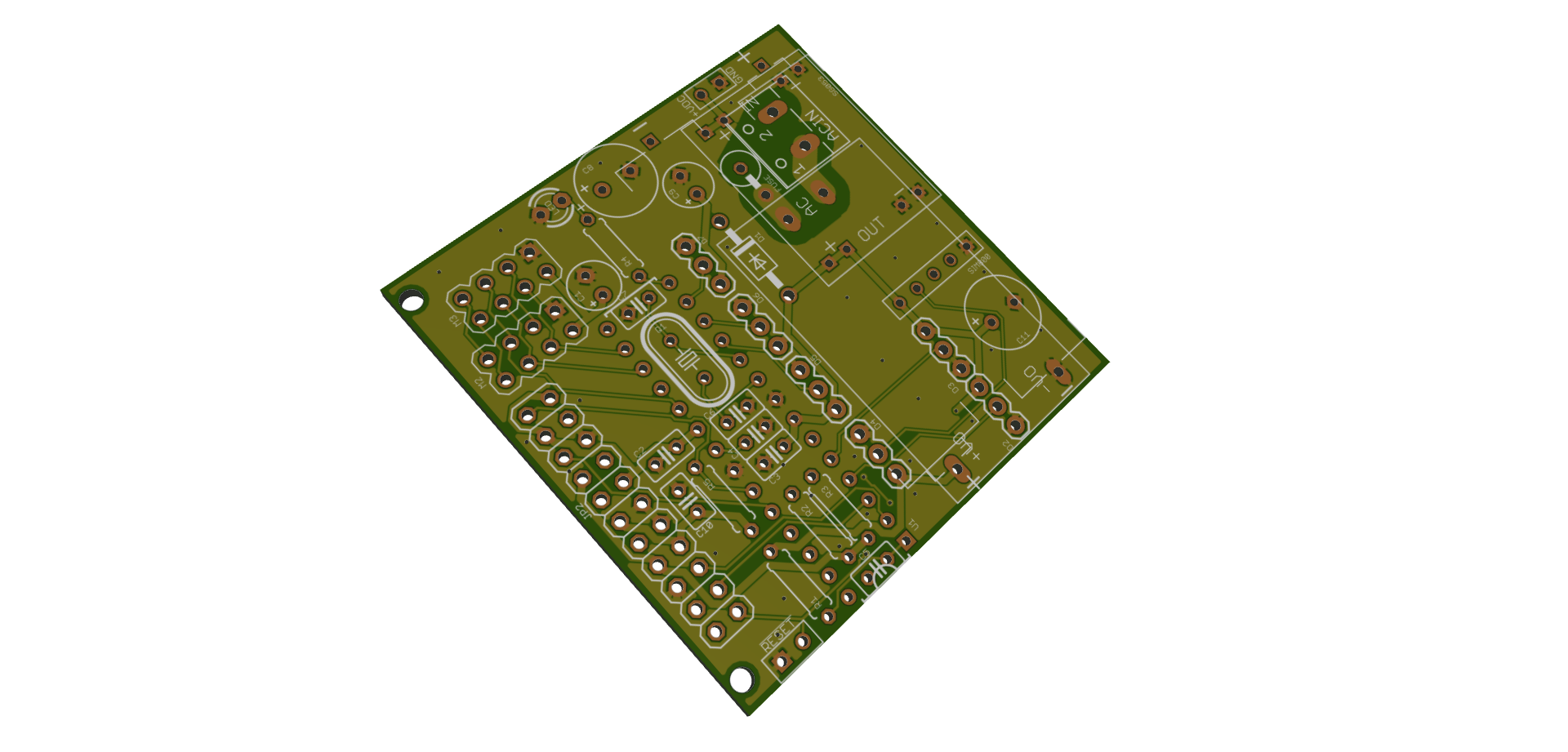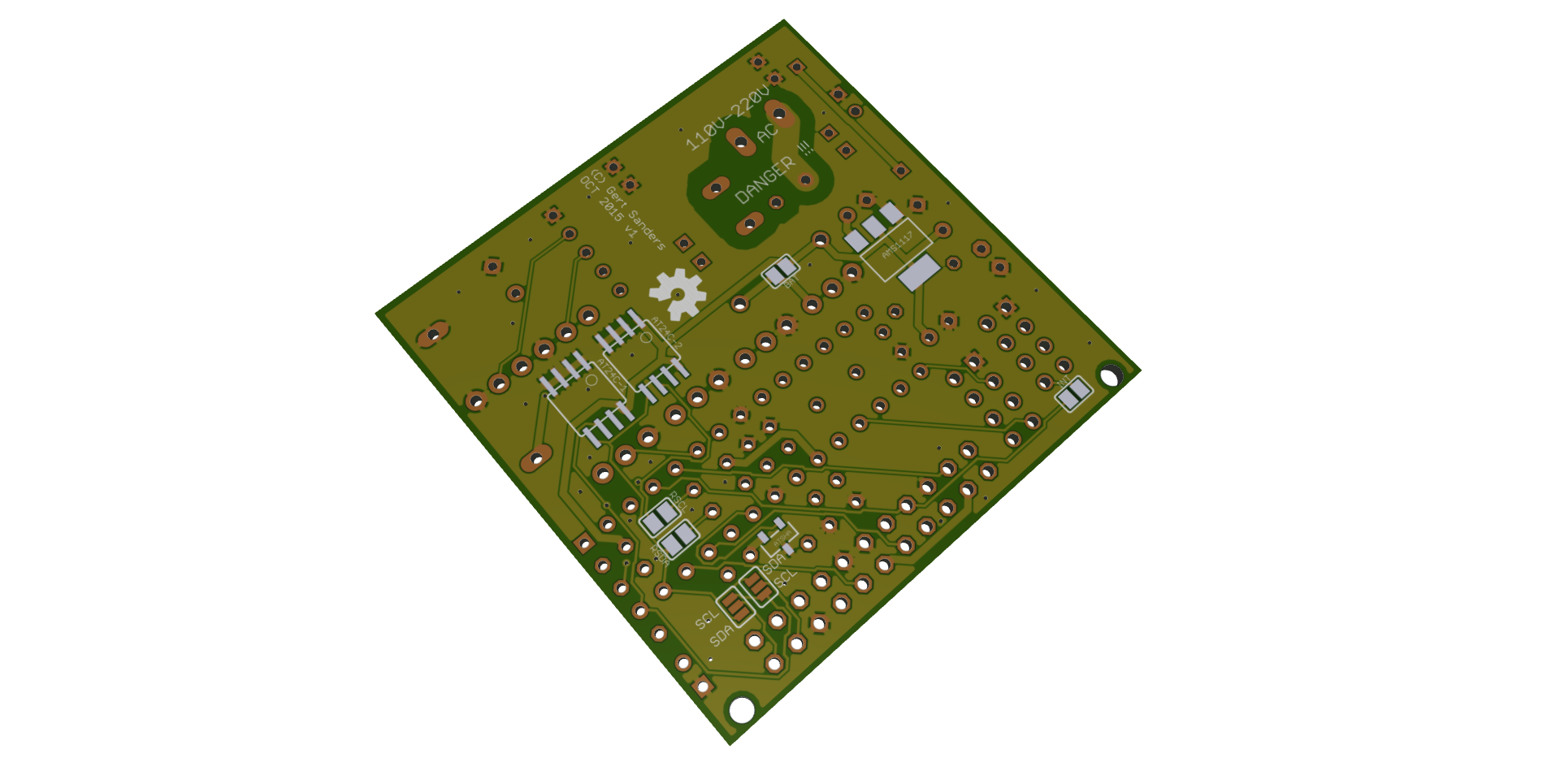My Sensor node "motherboard" (MySensorsNode)
-
oki, cool :smile:
-
The small 5x5 board I did most like a favor to anyone who would like to buy a few cheap ones (they are dirt cheap on DirtyPCBs, I will put a order-link to it when I have sent them for manufacture). I will use the board-specific layouts for my "real" sensors since they are tuned to the enclosures I plan to use. Hopefully I got my measurements right...but the 5x5 board will serve as my second prototype run before I tape out the "real" ones. Just so I can verify the design once more before I start deploying my actual sensor network. Took a few years but now I have all my personal "must haves" in place (security and features) so I am ready :D
The boards also have the external flash so I can handle any OTA bootloader variant and it supports both radios in through-hole variants so I can put sockets to easily swap radios later on as well. And I already ordered the 2mm pitch sockets for the RF69 so that is already done. -
I totally agree with your vision. your board, you know it, is great, a swiss army knife, useful :smiley:
and I am rather like you, meaning I hope I will start soon my "real" network too. can't wait! but like you said it takes so long time to study, dev and tests...
but it is so fun when it works :) -
The ultimate satisfaction is to tinker with it, test, improve, optimize, and then deploy and nail it from the start :)
-
yeah :smiley:
do you plan in future to invest in 3d printer? I am looking at this actually, too much tempting...
-
I was considering it for a while, but realised that I don't have the time for that unfortunately :(
And I am a total novice in 3D design, so I would also need to invest a lot in learning that as well. So I boldly decided to go for off-the-shelf products, or leech other peoples designes through 3dhubs :) -
yes I understand. we're always running after time...too bad to have to sleep :laughing:
I hope we will see lots of 3d design share in the future. to have a good opensource collection hardware, sketch, 3d design...it could be great! -
EDIT: I have "released" the 1.1 board in github and updated the top post to link to the releases.
Current status is that 1.1 is released as it is shipped to the manufacturer and current status is unverified (as I have not received the boards yet). It also currently only covers the 5x5 boards as I intend to verify that one before manufacturing the BOX-boards. -
I think this board is perfect but is it possible to modify it so that you have the option to replace the battery for a HLK-PM01 if wanting to use direct power ?
-
I think this board is perfect but is it possible to modify it so that you have the option to replace the battery for a HLK-PM01 if wanting to use direct power ?
@Cliff-Karlsson thanks! No, I'm not interested in that. I don't think that part would fit in my boxes. But as I have published all sources and cad files in an "open" format, and picked a license that permits derivative work, you are free to copy my board and add that, given that you follow the license :)
-
@Cliff-Karlsson : If the board below is tested (still on it's way from DirtyPCB to me), I will post the EAGLE files. This board allows several types of powering: battery (AAA), external battery (with DC regulator), direct 5V (if you mount the 3V3 LDO for the radio), HLK-PM01 for direct 120-220V AC. I need to test the various setups before I publish this, but a preview of the board is here:


-
@GertSanders said:
tested (still on it's way from DirtyPCB to me), I will post the EAGLE files. This board allows several types of powering: battery (AAA), external battery (with DC regulator), dir
Great, is it possible to use a RFM69? And do you solder an atmega (?) chip on to it or do you add a pro mini?
-
It's not designed for RFM69 but if you use an adapter and solder de bridge of the interrupt, then theoretically it could be used.
The processor is an atmega328p (not a pro mini). -
I just got my boards from dirtyPCBs but are there any list of the required components? And can I use rfm69 with a 5v pro mini or do I have to use a 3.3v pro mini?
-
I just got my boards from dirtyPCBs but are there any list of the required components? And can I use rfm69 with a 5v pro mini or do I have to use a 3.3v pro mini?
@Cliff-Karlsson you can find the BOM in GitHub under manufacturing. The board is designed for 3.3v pro mini. I have not taken 5v variant into consideration at all.
-
Are all components required? I know you can only use one radio / pcb and that the power sockets are optional. But I tried to find the cheapest components and after adding all the components from aliexpress the cost is almost 100 EUR and then I got probably atleast as many components from the more expensive shops left.
-
Are all components required? I know you can only use one radio / pcb and that the power sockets are optional. But I tried to find the cheapest components and after adding all the components from aliexpress the cost is almost 100 EUR and then I got probably atleast as many components from the more expensive shops left.
@Cliff-Karlsson well, I did not consider cost for my board. That said, 100EUR is definitely not required to spend for components on it. It depends on how you intend to use it and what flexibility you want. The ability to control certain aspects is optional as indicated by jumper configurations. I made it clear in my schematic what parts are optional to solder. You can of course cut more cost by skipping decoupling and such as well, but I can't vouch for board performance in that case.
